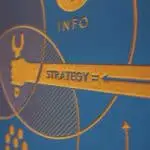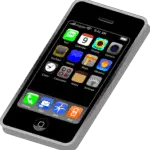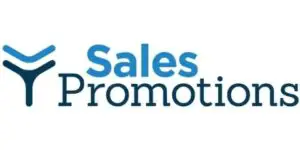Table of Contents
*This post may contain affiliate links. As an Amazon Associate we earn from qualifying purchases.
Know What Customers Want Before They Do
How customers demand product differentiation moves the world of innovation forward. Price has nothing to do with why products succeed.
There are four major differentiation factors to consider when developing new products, expanding market segments and creating promotional campaigns.
I have learned that a differentiation strategy should focus on:
- Creating a superior product that delivers a unique benefit to customers
- Being aware of the competition in your industry and from other sources
- Understanding your market segments and why your unique feature is important to them
- Communicating with customers in a way that appeals specifically to their emotions
Product differentiation always begins with customers and their unique needs. Price is not the driving factor. It is estimated that thirty-percent of new product launches fail because of inadequate market research.
Failing to truly understand your target market and the price elasticity of your competition is the number one downfall of product developers and marketers.
[amazon fields=”1976182190″ value=”thumb” image_size=”large” image_align=”center”]
[amazon fields=”1976182190″ value=”button”]
Solve Your Customer’s Problem Better
Successful, new to market, product developers often invest a lot of upfront time and money researching and testing concepts.

However, the sad truth is, often the first to market with a new product innovation usually does not survive when lower price me-too competition enters the market.
While the product developer is on top of the unique benefits their product delivers to customers, they often don’t perform their due diligence on the other three factors.
Too many times competition quickly copies a new idea to capture the developer’s target market.
Using lower price, a wider-distribution network, bigger ad campaigns or other business strategies, they manage to overshadow the original developer’s effort.
The good news for marketers of a product or service is that we can all identify a niche of customers that needs what we uniquely have to offer, and own the space. Applying the four differentiation strategy tactics effectively leads to success.
1. Deliver Unique Benefits To Your Customers

We have all experienced rapid changes in the products we used in our lives, no matter how young or old we may be.
For example, in my lifetime music listening went from vinyl, to tapes, to CD’s to mp3 players and now to streaming. Technology, not price drove customers towards alternative products.
Along the way, some marketers never saw the new technologies coming until it was too late. Others marketers were aware of the changes coming through ongoing research and were able to adapt.
It’s interesting to note in the music space there is now a growing niche of music lovers that want vinyl records again. Research and increased demand identified a new trend emerging. Through emotionally connecting with the different niche audiences for vinyl, entrepreneurs were able to re-launch a now growing vinyl industry. The price of these new vinyl products are high, but so is the growing demand of consumers.
Sometimes What’s Old Is New Again
‘What’s old is new again’ is often a truth in product differentiation.
For example, the iPhone was ingenious. Essentially the iPhone product re-packaged a cell phone, a computer, an internet connection, a clock, and more existing technologies.

Figuring out a user-friendly way to compress all of these technologies into a handheld device was genius. If one looks at the iPhone as a combination of many different items, the price is a steal.
Technologies were ‘repackaged’ to meet consumer evolving needs. Apple, the iPhone manufacturer, stays ahead of the competition by establishing an emotional connection with product users, and by setting industry trends. They are able to get their price by always being the first of its kind in the market.
In your business, how can you apply the same business strategy? Differentiation often comes from combining different product features to improve upon current products to meet changing users need.
2. Be Acutely Aware Of Competition
Understanding the customer, the end-user, is the most important research needed when identifying ways to differentiate your product.
The ability to identify:
- A unique user benefit, and
- How it will enhance the user’s experience
are the objectives of your research efforts.
Me-too products are everywhere. If you are launching something new, and it’s successful, it will be copied. If you are not aware of direct and indirect competitors you face a tough battle.
[amazon fields=”0999738100″ value=”thumb” image_size=”large” image_align=”center”]
[amazon fields=”0999738100″ value=”button”]
GoPro Rapid Rise And Demise
GoPro camera serves a niche of action sports enthusiasts that want to record their extreme activities. Surfers, bikers, and other fast-moving sports participants love the product.
GoPro appeared to be an overnight success.
In 2014 it was the biggest consumer electronics IPO in 20 years. At that time it had a valuation of $2.96 billion!
The company’s stock price went from a high of $85 a share in 2014 to around $7 a share in 2018. What happened?
When GoPro started out, the company had a great idea, which helped them raise millions from their IPO.
Then things changed, GoPro diversified into drones (not their core business) and faced a loss of $373 million when they had to recall defective new drone products.
They also launched a fantastic new mountable camera at the price point of $499.
Then Google Clip Enters The Picture
Around the same time as their new product launch, Google launched their more advanced Google Clip wireless smart camera.
For the price point of $249. The Google Clip product was a lower price, easy to use and it had smart technologies that captured action without user interface. Instead of being mounted on to a bike, or surfboard, the Google Clip simply clicks on and captures the action using smart tech.
Google Clip’s marketing campaign reached a broader audience of potential customers. As the product name states, Google Clip Camera clips on to a baby stroller, a jacket, a backpack… you get the difference. Lower price, bigger marketing campaign, a broader audience, and smart technology. It’s a very different business strategy.
https://youtu.be/6H4XCd8OTvY
GoPro Comeback
Despite the rapid decline in profits and stock share price, GoPro can make a come back. The GoPro brand appeals to a niche of loyal action sports customers and the GoPro name is synonymous with capturing adventure.
Creating new products and services that appeal to their audience, at a competitive price point, may be part of the comeback strategy.
Inspiring their niche customers to achieve bigger and better experiences, and offering better ways to capture and share these experiences, builds an emotional connection.
Emotionally connecting with their niche through their download website, social media and other community-building activities closes the loop in building a strong emotional relationship.
Understanding The Emotion Behind Why We Buy
One of the best explanations of how to appeal to the emotions of our customers comes from Simon Sinek’s book “Start With Why: How Great Leaders Inspire Everyone To Take Action”

The author explains that “ just as it’s hard for people to speak their feelings, like someone trying to explain why they love their spouse, it’s equally hard for an organization to explain it’s why.”
He also states “ people don’t buy what you do, they buy why you do it.”
The book gets into some science about how the human brain processes information. Here’s a simplified summarization that may help you understand how to connect emotionally with customers.
The what you do is understood by the rational part of the brain (neocortex). This area controls language, communication and understanding. We all use these three things when explaining what we do and things such as price, functions, results. No emotions, just facts.
The why part of the brain (Limbic Brain) controls feelings and decision making, but not language. This limbic system of nerves controls emotions (fear, pleasure, anger) and drives (sex, hunger, trust, loyalty).
Interesting that the what part of the brain processes language while the why part of the brain has nothing to do with the words we hear.
[amazon fields=”1491982276″ value=”thumb” image_size=”large” image_align=”center”]
[amazon fields=”1491982276″ value=”button”]
4. How To Appeal To Your Customers Emotions
When we communicate from the outside, people understand what we do. This does not necessarily change behavior.
When we communicate from the inside out, we’re appealing to the part of the brain that controls decision making.
So what does that look like?
Simon Sinek’s example was the ad Apple Computer ran during the 1984 Super Bowl.
The ad combined elements of George Orwell’s 1984 in black and white, with a female athlete, who appears in color. She throws a hammer through a TV screen that has a monotone man speaking “what” people watching should expect.
When the hammer hits the screen everything on-screen explodes and the message across the disrupted screen in writing and narrated is:
On January 24th Apple Computer will introduce Macintosh.
And you’ll see why 1984 won’t be like “1984”
The stark background, the colorful woman disrupting the scene, and the explosion on the viewers’ TV screen created an emotional connection. The words and the explosive visual stimulated the emotional part of the brain. The commercial went from what to why by combining visuals and language.
https://youtu.be/axSnW-ygU5g
When you identify your product’s all-important differentiation factor for your customers, don’t tell them what you are going to do for them, tell them why.

